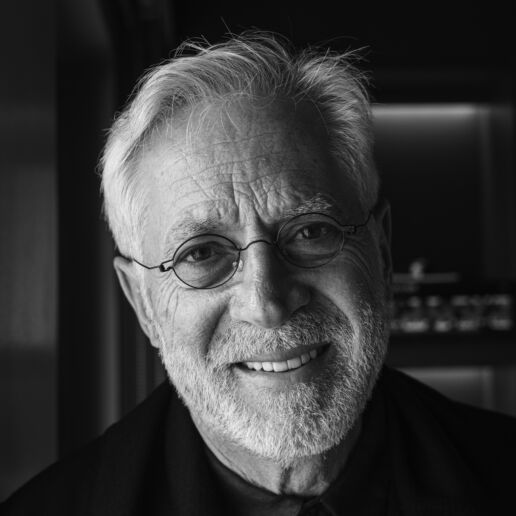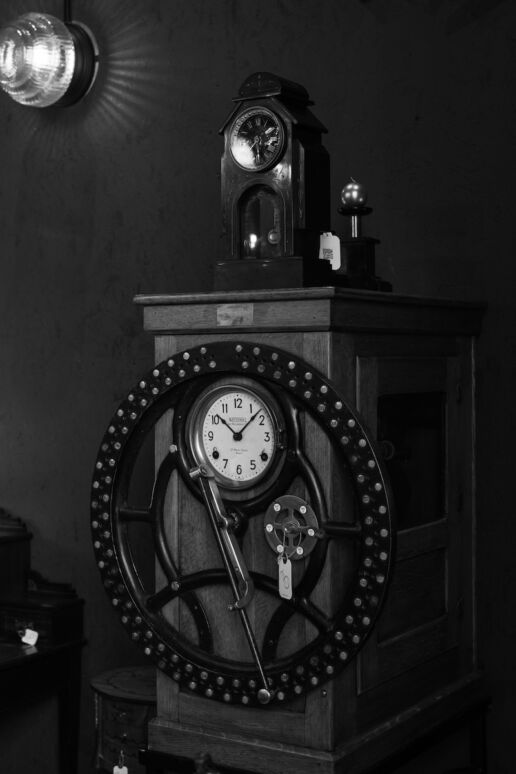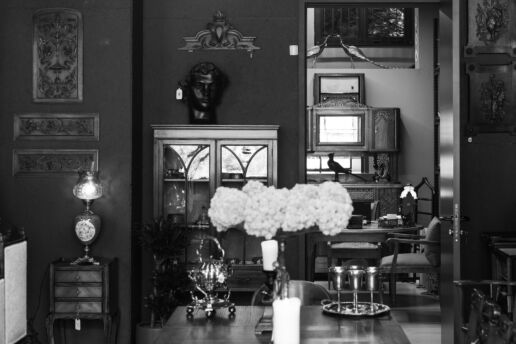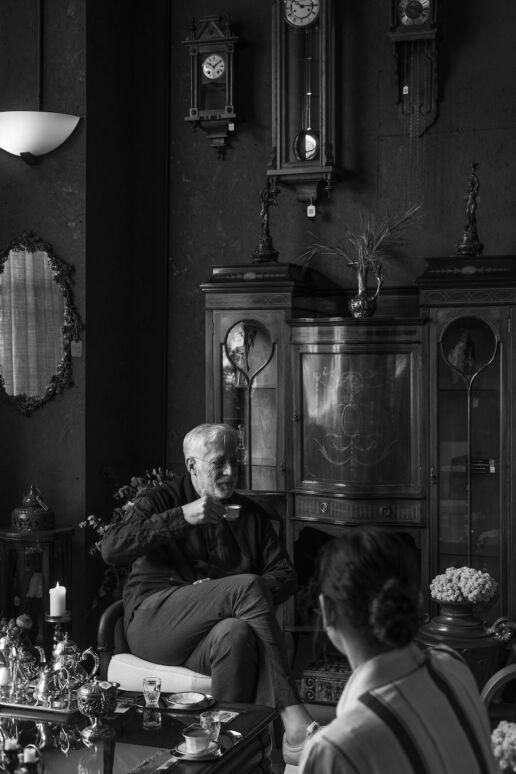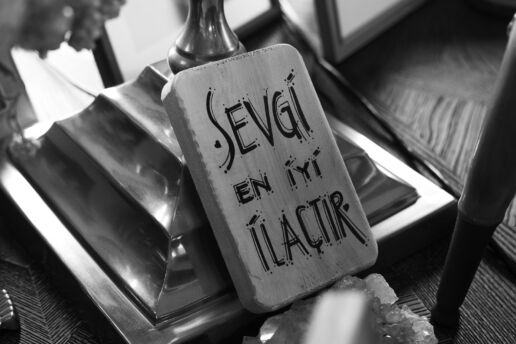ART, VISION and PEACE
Erol Tabanca is a co-founder of one of the largest construction companies in Turkey and also the mastermind of the Odunpazarı Modern Museum (OMM) in Eskişehir. We had an intriguing conversation about his childhood and Istanbul, art and the OMM, as well as his passion for antiques, politics, and peace.Photography Nazlı Erdemirel
Let’s begin with your childhood. Did you collect things when you were a child? Can you recall having an interest in art? What was it like to grow up in Eskişehir?
I can’t say I was a collector back then. Sports was my true passion. The local Eskişehir Football Club was quite popular when I was young and that encouraged me to spend a lot of time playing football in the neighbourhood. Eskişehir was much smaller back then and we had many relatives. I had a great childhood with my cousins. Once, I remember trying to make a comic book with my friends. We sat down and everyone planned a page. A week later, it was two pages, then three, and so forth. I think that had some affiliation with art.
You studied architecture in Ankara. As an architect, if you were to replan Istanbul, what would you do to alter its various districts?
The most daunting and threatening issue facing Istanbul right now is the earthquake. My first step would be to improve the city’s earthquake resilience. I would transform risky areas and places along fault lines into green space. Poor quality construction kills cities. Any kind of trade and manufacturing activity must be removed from the Old City and nearby neighbourhoods. This is a tourist area. Actually, the entire city is full of tourist attractions. Can you imagine that there are rows of shops selling machinery and spare car parts on an avenue along the Golden Horn? Many attempts have been made to relocate these establishments but nothing has been achieved until now. These steps must be taken. Replanning Istanbul is a major challenge.
Can you tell us about some of the places you like to go in Istanbul, the places that make you feel good, and what you like to do in the city?
We are lucky to live very close to Emirgan Grove. I can leave my house and be walking under the trees within minutes. My wife and I enjoy our forest walks there the most. That is a place where you can take in the beauty of Istanbul. Of course, there is more. We frequent the Kıyı restaurant in Tarabya. I love eating out at seafood restaurants. On weekends, we sometimes go to Belgrade Forest. For some physical activity after work, I leave my car in Arnavutköy and walk home along the Bosphorus.
You have done something significant for the public, especially in Eskişehir. What does OMM mean to you?
My name is now very much associated with the museum, however, I have completed much larger projects in the past. Don’t get me wrong, I’m not boasting. I just want to put it into context for you. We are a very large construction company and have done business almost everywhere in the world. I’m talking about large-scale projects with massive budgets, but I realised all of that was business done for profit. By contrast, the museum project elicited a different feeling in me. It was a non-profit initiative for the benefit of the public. People really notice that. I never expected people’s reactions to be so positive. The project emerged naturally. Our train of thought was: We have an interest in art. Our interest led to the creation of a collection. We need to exhibit this collection. Where can we do that? It would be nice if there were a museum. Where? What better place than our hometown… People from all walks of life have embraced this idea. I have felt very proud, both personally and on behalf of my family. So I can say, without a doubt, that although it isn’t the largest project, this is the most important, and meaningful, project of my career .
By now, the name Odunpazarı Modern Museum and the project, in general, have been viewed more than two billion times on social media.
You worked with Japanese architect Kengo Kuma to create the OMM building. What was the process like? Did you enjoy bringing together the Japanese and Turkish cultures?
When I first started pondering how to make use of our collection, the word ‘museum’ sounded very ambitious to me. I wasn’t sure if we had enough knowledge and a large enough collection to open a museum. Discussing the project with friends made me think that the location of the project was also important, and thanks to the efforts of Mayor Yılmaz Büyükerşen, I started considering Eskişehir, a very privileged Anatolian city rich with culture.
I decided that something like this had to have a global impact. I am an architect with a great team. I thought it would be better, however, to work with Kengo Kuma in order to promote Eskişehir and our country internationally. First, I visited him in Japan and then I invited him to Eskişehir.
In the city, Kuma was very impressed with Odunpazarı, the district where the museum is located. This neighbourhood is host to a number of typical examples of Ottoman infrastructure. He was very excited to see the construction system and materials there. Kuma is an architect with a very busy schedule and yet, after spending only three days in Eskişehir, he sent us some sketches. They were thrilling to see. Before long, the project was ready. He had created a synthesis of Ottoman civil architecture, mosque design, and the sublime simplicity of Japanese architecture. The project was embraced by everyone. By now, the name Odunpazarı Modern Museum and the project, in general, have been viewed more than two billion times on social media.
What factors come into play when choosing works of art for your collection?
I never felt an urge to do or choose anything specific. I always just bought what I liked. Defne Casaretto has been helping me in this capacity for a long time. She started to classify the pieces I liked by period and by artist. I began to notice something when I looked at my collection: All of these pieces are labour-intensive and some of them have an element of intrigue or the unexpected .
I have come to see this more clearly thanks to my daughter İdil Tabanca’s collection. The artwork I usually choose is not necessarily about expression or an emphatic message. The works in İdil’s collection are more about protest; their means of expression vary but they invariably contain a message. This may be a generational difference between us.
And what about your antique collection? Where do you shop and how do you choose what to buy?
I like owning vintage objects. Maybe because I am an architect, I don’t blink an eye if I stumble upon any measuring instruments. During a short trip to Europe, my wife and I preferred to stay in boutique hotels and saw that antiques were used as decoration everywhere, to the extent of becoming an element of each building’s design. We also own a listed building in Karaköy that we are working to convert into a hotel. We wanted it to be a place where antiques blend into daily life. This triggered my interest in antiques. It excited me tremendously. I started going to fairs in Europe. These events are very interesting. You turn up early in the morning. Sellers and buyers are allowed into the fair at the same time. You see everyone running around, trying to grab whatever they can find. Large furniture is not my focus. I enjoy collecting small items to use around the house. I especially enjoy collecting Art Nouveau and Art Deco objects. There was a point when we realised that we owned enough antiques to fill a large warehouse. Now we showcase that collection in our shop @Neoantiqueandart.
Do you have any plans for your farmhouse in Bodrum?
I realised something after I grew more familiar with the art community. There were so few opportunities and spaces for young artists, especially for sculptors. I wanted to create a space to allow both experienced and emerging artists to spend time together and to find inspiration. It was important that it embrace everyone involved in art. There were a few old buildings on the farm that we refurbished in order to make it a space where artists can stay, collaborate and exhibit their work. I expect it to open in 2024 and, one day, I hope it will become a space open to the public.
Politicians should be speaking in a language that brings people together and focuses on peace.
You said in a former interview that art has a soothing effect on you. I liked the expression very much. What do you do to find peace in your daily life?
Political tensions have run high in Turkey in recent years. Politics should preserve the nation and serve the greatest good, but since those goals have not been shared by everyone, mental and even physical conflicts continue to plague us. Politicians should be speaking in a language that brings people together and focuses on peace.
I think sports are an excellent tool for this. Sports are a building block, a bonding agent, just like music, painting and sculpture. I felt this even more powerfully after we had opened OMM. Once in the museum, people shed their political identities; it doesn’t matter if they are right wing or left wing, religious, conservative or liberal. They discuss the art and try to discern its message. You find visitors from all walks of life there. This is so soothing. Remember that this country belongs to all of us. We must seek ways to honor and celebrate it together. For my part, I will do my best to promote art and to benefit society.


